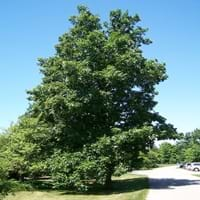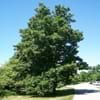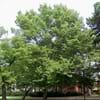Life Span
Perennial
Perennial
Origin
Northeastern United States, Mid-Atlantic United States, Southeastern United States, Central United States, Canada
North America, United States, Northeastern United States, Mid-Atlantic United States, Southeastern United States, North-Central United States, Central United States, South-Central United States, Canada
Types
Northern shagbark hickory, Southern shagbark hickory
Autumn Flame, October Brilliance, Tiliford
Number of Varieties
Not Available
Habitat
Woodland Garden Canopy
Forests, Wide range of ecological site
USDA Hardiness Zone
4-8
3-9
Sunset Zone
Not Available
A2, A3, 1a, 1b, 2a, 2b, 3a, 3b, 4, 5, 6, 7, 8, 9, 14, 15, 16, 17
Habit
Oval or Rounded
Oval or Rounded
Flower Color
Not Available
Red
Flower Color Modifier
Bicolor
Bicolor
Fruit Color
Not Available
Red, Green, Brown
Leaf Color in Spring
Not Available
Light Green
Leaf Color in Summer
Not Available
Green, Dark Green
Leaf Color in Fall
Not Available
Yellow, Red, Orange, Yellow green, Gold, Dark Red, Orange Red
Leaf Color in Winter
Not Available
Not Available
Leaf Shape
Pinnate
Maple shaped
Plant Season
Spring, Summer, Fall
Spring, Summer, Fall
Sunlight
Full Sun
Full Sun, Partial Sun
Type of Soil
Loam, Sand
Clay, Loam, Sand
The pH of Soil
Acidic, Neutral
Acidic, Neutral, Alkaline
Soil Drainage
Well drained
Average
Bloom Time
Not Available
Early Spring, Spring
Tolerances
Not Available
Wet Site, Soil Compaction
Where to Plant?
Ground
Ground
How to Plant?
Seedlings
Seedlings, Vegetative Reproduction
Plant Maintenance
Medium
Medium
Watering Requirements
Average Water Needs
Water Deeply, Water when top layer of soil becomes dry
In Summer
Lots of watering
Lots of watering
In Spring
Moderate
Moderate
In Winter
Average Water
Average Water
Soil pH
Acidic, Neutral
Acidic, Neutral, Alkaline
Soil Type
Loam, Sand
Clay, Loam, Sand
Soil Drainage Capacity
Well drained
Average
Sun Exposure
Full Sun
Full Sun, Partial Sun
Pruning
Remove damaged leaves, Remove dead branches, Remove dead leaves
Remove dead branches, Remove dead leaves
Fertilizers
Apply 10-10-10 amount
General garden fertilizer, No need to fertilize every year
Pests and Diseases
Leaf spot, Powdery mildew, Trunk Rot, Verticillium Wilt
Anthracnose, Bleeding canker, Decline, Fomes root rot, Ganoderma root rot, Laetiporus root rot, Leaf spot, Powdery mildew, Tar spot, Verticillium Wilt
Plant Tolerance
Drought
Soil Compaction, Wet Site
Flowers
Insignificant
Insignificant
Flower Petal Number
Not Available
Single
Foliage Texture
Not Available
Medium
Foliage Sheen
Not Available
Matte
Attracts
Mice, Red and Gray Squirrels
Not Available
Allergy
breathing problems, Mouth itching, Sore Throat, Swelling, Throat itching
breathing problems, Eczema, flushing of face, Hives, Low blood pressure, Oral cavity, Rapid Heartbeat, Runny nose, Watery eyes
Aesthetic Uses
Not Used For Aesthetic Purpose
Showy Purposes
Beauty Benefits
Moisturizing
Not Available
Environmental Uses
Air purification
Air purification, Wildlife
Medicinal Uses
Analgesic, Antirheumatic
Not Available
Part of Plant Used
Sap, Seeds
Whole plant
Other Uses
Used as an excellent fuel, Used in pies, cakes, Used to make yellow dye, used to prepare nut milk
Edible syrup, Used as Ornamental plant
Used As Indoor Plant
No
Yes
Used As Outdoor Plant
Yes
Yes
Garden Design
Edible, Shade Trees
Feature Plant, Shade Trees, Street Trees
Botanical Name
CARYA ovata
ACER rubrum
Common Name
Shagbark Hickory
Northern Red Maple, Red Maple
In Hindi
Shagbark Hickory
लाल मेपल के पेड़
In German
Shagbark Hickory
Red Maple Tree
In French
Caryer ovale
Red Maple Tree
In Spanish
Shagbark Hickory
Árbol de arce rojo
In Greek
Shagbark Hickory
Red Maple Tree
In Portuguese
Shagbark Hickory
Árvore de bordo vermelho
In Polish
ORZESZNIK PIĘCIOLISTKOWY
Red Maple Tree
In Latin
Carya
Rubrum Maple ligno
Phylum
Magnoliophyta
Magnoliophyta
Class
Magnoliopsida
Magnoliopsida
Order
Juglandales
Sapindales
Family
Juglandaceae
Aceraceae
Clade
Angiosperms, Eudicots, Rosids
Angiosperms, Eudicots, Rosids
Tribe
Juglandeae
Not Available
Subfamily
Juglandoideae
Not Available
Number of Species
Not Available
Not Available
Properties of Shagbark Hickory and Red Maple Tree
Wondering what are the properties of Shagbark Hickory and Red Maple Tree? We provide you with everything About Shagbark Hickory and Red Maple Tree. Shagbark Hickory doesn't have thorns and Red Maple Tree doesn't have thorns. Also Shagbark Hickory does not have fragrant flowers. Shagbark Hickory has allergic reactions like breathing problems, Mouth itching, Sore Throat, Swelling and Throat itching and Red Maple Tree has allergic reactions like breathing problems, Mouth itching, Sore Throat, Swelling and Throat itching. Compare all the properties and characteristics of these two plants. Find out which of these plant can be used as indoor plant. If you are interested to decorate your house and garden, find out aesthetic uses, compare them and select the plant which will beautify your surrounding. Along with beautification, try comparing medicinal and edible uses of Shagbark Hickory and Red Maple Tree and you can choose the plant having best and most benefits.
Season and Care of Shagbark Hickory and Red Maple Tree
Season and care of Shagbark Hickory and Red Maple Tree is important to know. While considering everything about Shagbark Hickory and Red Maple Tree Care, growing season is an essential factor. Shagbark Hickory season is Spring, Summer and Fall and Red Maple Tree season is Spring, Summer and Fall. The type of soil for Shagbark Hickory is Loam, Sand and for Red Maple Tree is Clay, Loam, Sand while the PH of soil for Shagbark Hickory is Acidic, Neutral and for Red Maple Tree is Acidic, Neutral, Alkaline.
Shagbark Hickory and Red Maple Tree Physical Information
Shagbark Hickory and Red Maple Tree physical information is very important for comparison. Shagbark Hickory height is 1,830.00 cm and width 1,220.00 cm whereas Red Maple Tree height is 1,220.00 cm and width 1,220.00 cm. The color specification of Shagbark Hickory and Red Maple Tree are as follows:
Shagbark Hickory flower color: Not Available
Shagbark Hickory leaf color: Not Available
Red Maple Tree flower color: Red
- Red Maple Tree leaf color: Light Green
Care of Shagbark Hickory and Red Maple Tree
Care of Shagbark Hickory and Red Maple Tree include pruning, fertilizers, watering etc. Shagbark Hickory pruning is done Remove damaged leaves, Remove dead branches and Remove dead leaves and Red Maple Tree pruning is done Remove dead branches and Remove dead leaves. In summer Shagbark Hickory needs Lots of watering and in winter, it needs Average Water. Whereas, in summer Red Maple Tree needs Lots of watering and in winter, it needs Average Water.





